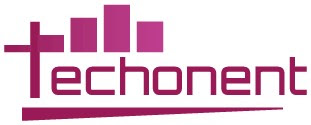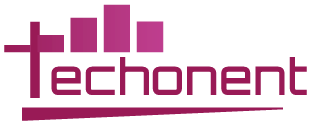
Technology is becoming the source of major change in the world. In this, it is artificial intelligence and machine learning that are taking the center stage. New AI and ML tools are being launched regularly, changing how businesses operate, and people do their daily tasks.
The demand for innovation in artificial intelligence solutions has led to an increase in the need for AI developers. As developers, the variety of tools can be overwhelming. So, in this post, we are focusing on our top 5 picks of AI tools that you must master for implementing real-world solutions like building chatbots, sentiment analysis, and more.
Top 5 AI and ML Tools to Use for New Developers
While experienced developers know advanced AI ML tools, they all start small. So, here is our choice of top 5 AI and ML tools based on simplicity, community, and features for developers stepping into the world of AI.
Still, it is important to remember that you will need time and practice to master these tools as they can be a little complex.
Paperspace
Created by: Paperspace
A Brief Introduction
An excellent tool to start your AI and ML journey, this tool offers cloud-based GPU resources. Comes at a low cost with ready-to-use deep learning machines, allowing you to start without the hardware setup.
Designed to streamline AI and ML development, it provides a comprehensive suite of tools for developers, researchers, and businesses. The developers can use them to build, train, and deploy machine learning models efficiently. With its user-friendly interface and scalable infrastructure, Paperspace is a go-to solution for both beginners and seasoned professionals.
Key Features of Paperspace
- Gradient Notebooks: Jupyter-compatible notebooks for seamless collaboration and experimentation.
- ML Workflows: Simplified pipeline creation with automation for end-to-end machine learning processes.
- Scalable GPUs: Access to powerful cloud GPUs for faster model training and inference.
- Team Collaboration: Tools for sharing and managing projects within teams.
- Integrations: Supports TensorFlow, PyTorch, Keras, and other popular frameworks.
Pros
- Intuitive UI and beginner-friendly features make it accessible.
- Suitable for projects of all sizes, from small experiments to large-scale deployments.
- Flexible pricing options with pay-as-you-go plans.
- Encourages teamwork through shared resources and workflows.
Cons
- Requires a stable internet connection to utilize its features.
- Advanced tools may require initial training for non-technical users.
Paperspace is a versatile and powerful tool that simplifies AI/ML workflows, making it an excellent choice for organizations aiming to harness the power of machine learning.
Also Read: SWGoH Web Store
Hugging Face
Created by: Hugging Face, Inc.
A Brief Introduction
Hugging Face is a leading platform for natural language processing (NLP) and machine learning solutions. It provides pre-trained models, datasets, and libraries, making it easier to implement advanced generative AI solutions. Known for its Transformers library, Hugging Face empowers developers to build NLP, vision, and multimodal applications efficiently.
Key Features
- Transformers Library: Pre-trained models for NLP, vision, and audio tasks.
- Datasets: Access to curated datasets for faster prototyping.
- Model Hub: A repository of pre-trained and community-contributed models.
- Inference API: Simplified model deployment with scalable APIs.
Pros
- User-friendly tools for NLP and ML tasks.
- Vast library of pre-trained models saves time.
- Active community and regular updates.
- Free tier for developers to get started.
Cons
- Limited focus on non-NLP tasks compared to general-purpose ML tools.
- High computational requirements for some models.
Jupyter Notebook
Created by: Project Jupyter
A Brief Introduction
Jupyter Notebook is an open-source, web-based interactive development environment (IDE) for data science and machine learning solutions. It allows users to write, debug, and execute Python code, making it ideal for prototyping and visualization.
Key Features
- Interactive Coding: Combines code, text, and visualizations in one document.
- Extensibility: Supports over 40 programming languages.
- Visualization Integration: Compatible with Matplotlib, Seaborn, and more.
- Collaboration Tools: Share notebooks with ease.
Pros
- User-friendly interface for data analysis.
- Great for exploratory data analysis (EDA).
- Open-source and free to use.
- Strong community support.
Cons
- Limited scalability for production workflows.
- Requires additional tools for deployment.
Also Read: 127.0.0.1:49342
PyTorch
Created by: Facebook AI Research (FAIR)
A Brief Introduction
PyTorch is a popular deep learning framework offering flexibility and speed. With dynamic computation graphs and an intuitive API, it is widely used in academic research and industry applications for building and training AI models.
Key Features
- Dynamic Computation Graphs: Enables real-time modifications.
- TorchScript: Facilitates model optimization and deployment.
- Rich Ecosystem: Includes libraries for vision, NLP, and RL.
- CUDA Integration: Optimized for GPU acceleration.
Pros
- Highly flexible for experimentation.
- Extensive support for custom models.
- Strong focus on research and innovation.
- Growing community and robust documentation.
Cons
- Slightly steeper learning curve for beginners.
- May require additional libraries for deployment.
TensorFlow
Created by: Google Brain Team
A Brief Introduction
TensorFlow is a comprehensive open-source machine learning framework for building and deploying scalable AI models. It supports various applications, from deep learning research to large-scale production systems.
Key Features
- Keras API: High-level API for easy model building.
- TF Lite: Optimized for mobile and embedded devices.
- Distributed Training: Efficient training across multiple devices.
- TensorFlow.js: Deploy models in web environments.
Pros
- Extensive ecosystem for diverse ML tasks.
- Strong support for production-grade solutions.
- Regular updates and active community.
- Cross-platform support, including mobile.
Cons
- Complex API can overwhelm beginners.
- Debugging is less intuitive compared to PyTorch.
Also Read: Pedrovazpaulo Business Consultant
AI and ML Tools – Make Your Development Journey Successful
Businesses and developers understand the importance of the right AI and ML tools to make their artificial intelligence solutions powerful. It is therefore necessary for the people creating these AI/ML solutions to not only know about these tools but to have thorough understanding of them to create the perfect tools.

